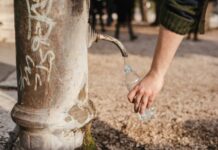
Risks to the environment and human health
Every year on New Year’s Eve there is a significant increase in air pollution due to fireworks shows. Fireworks and pyrotechnics in general release large quantities of particulate matter into the atmosphere. When they are exploded simultaneously, concentrations of particulate matter in the air reach exceptional peaks. Fireworks release PM10, PM2.5, but also ozone, sulphur dioxide and nitrogen dioxide. Due to the high levels of particulate matter on New Year’s Eve, heavy metals such as aluminium, arsenic, barium, lead, caesium and selenium can reach levels that are dangerous to human health. The sulphur content can also reach critical levels.
In addition, fireworks leave a lot of waste. Tons of cardboard, plastic, clay and wood remain on the lawns and streets of our cities. While rubbish in the city is removed by the waste collection service, many firework remains are left on lawns and green spaces for a long time (often forever). In the open air, it is simply difficult to dispose of thousands of small remnants. Depending on the desired effect, fireworks have different shapes and compositions. They consist of between 25% and 37% pyrotechnic material, the rest being made up of solids such as cardboard, plastic, clay and wood. The main component of pyrotechnics is black powder (53% to 67%), a mixture of potassium nitrate, charcoal and sulphur. Depending on the effect and colour, different metals and chemicals are added (potassium, followed by barium, strontium, magnesium and copper, for colour effects).
In addition, New Year’s Eve fireworks and bangers cause thousands of injuries and avoidable deaths every year. In view of the pandemic that has plagued the whole of humanity for the past two years, this is certainly a ‘tradition’ that should have been avoided in order not to further overload hospitals.
A disaster for wildlife
The noise of New Year’s Eve firecrackers causes a lot of noise pollution that is often overlooked. “Man”, explains WWF Italy, “can hear with a perception between the frequencies known as infrasound, around 15 hertz, and those known as ultrasound, above 15,000 hertz. Dogs and cats, on the other hand, have far superior hearing faculties: dogs up to around 60,000 hertz and cats up to 70,000 hertz. In farm animals such as cows, horses and rabbits, the consequences of explosions can even cause pregnant females to miscarry as a result of frightening trauma‘.
According to WWF estimates, at least 5,000 animals die each year in Italy as a result of New Year’s Eve bangers. About 80% of these are wild animals, mainly birds, including birds of prey, which, as the WWF reports, “lose their sense of direction when frightened and instinctively flee, risking hitting an obstacle due to poor visibility. Others abandon their winter roost (trees, hedges or roofs), wandering blindly in the dark. Finding no other shelter, they die of cold because of the sudden expenditure of energy in a season when food is scarce, reducing their autonomy.
Child labour behind New Year’s Eve fireworks and bangers
We consciously accept the acrid smog, the remains on the lawns and the frightened pets after New Year’s Eve fireworks for the beautiful spectacle in the sky. To make matters worse, no one thinks about the working conditions, dangers and health of the people who produce the fireworks.
Production in India and China covers 97% of the world market. In the city of Liuyang in China alone, a third of the population works in the 1,700 fireworks factories. About 70,000 children work in the fireworks industry in India. Children between the ages of ten and twelve are underpaid and work in extremely dangerous conditions. Lack of safety precautions and contact with chemicals lead to health problems and, more often than not, to serious accidents.
For fireworks there is still no quality label that excludes child labour. However, consumers can find their way around the so-called CE mark. This guarantees that the firework has been tested for compliance with legal standards. It therefore meets the prescribed safety standards. This at least ensures that it comes from a professional factory.
Alternative to traditional New Year’s Eve fireworks and bangers

Instead of fireworks, cities and municipalities can organize a musical laser show. The fascination for the audience lies in the choreography of the light effects to the rhythm of the music. Lasers and reflectors get by without fine powders, heavy metals, and with less expenditure of financial resources, but conjure up equally intoxicating images in the New Year’s night sky.






































